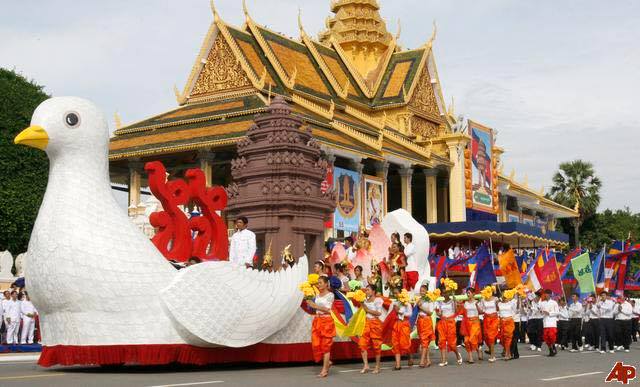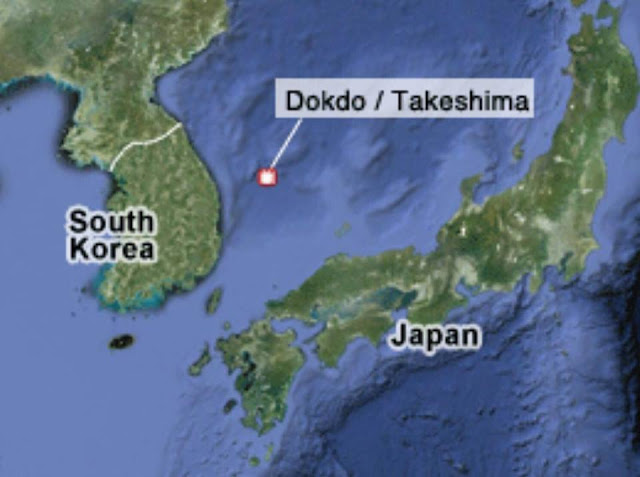In the
world every country has its own Independence Day. Independence day is a day that
lead everyone around the world live with happily, safety, peace and happiness. Every
country has it own culture and also difference Independence Day. There are many
points of differences between US and Khmer independence day such as culture,
date, the way of celebration, carnival , picnics, concert, base ball games, US
has got from Great Britain for 240 years ago, Khmer has got from France for
63years ago.

First,
the US Independence Day also referred to as Fourth of July or July Fourth in The U.S., is a federal holiday commemorating
the adoption of the declaration of Independence on July 4, 1776, by the
Continental Congress declaring that the American colonies regarded themselves
as a new nation, the United States of America, and no longer part of the British empire.
Independence Day is commonly associated with fireworks, parades, barbecues, carnivals, fairs, picnics, concerts, baseball
games, reunion and political speeches and
ceremonies, in addition to various other public and private events celebrating
the history, government, and traditions of the United States. Independence Day
is the National Day of the United States. Independence
Day is commonly associated with fireworks, parades, barbecues,
carnivals, fairs, picnics, concerts, baseball games, family reunions, and
political speeches and ceremonies, in addition to various other public and
private events celebrating the history, government, and traditions of the
United States.
Second,
Cambodia
was a French protectorate
for 90 years before
it gained independence from France on November
9, 1953. Independence Day, which marks
that event, is a national
holiday. The principal
celebrations are held
in the capital city
of Phnom Penh, beginning
with a morning ceremony
at Independence Monument on the crossroads of Norodom
and Sihanouk Boulevards,
usually with the
King of Cambodia in attendance. Later in the
day, there is a gala
parade held in front
of the Royal Palace
in Phnom Penh, with
colorful floats and
marching bands. Shops
are adorned with
national flags. After
dark, the Royal
Palace and other
important buildings and monuments are
lit up. A large
fireworks display is held near the riverbanks of the Royal
Palace.
Third, the similar points of US and Khmer independence such as got independence and also have celebrations. Both of countries celebrate Independence Day every year to remain all citizen or people next generation to know and get what are their cultures . The celebrations include foods, fireworks, and parades. There are a few points of the similarity of US and Khmer independence day. They get independence and celebrate every year.
Third, the similar points of US and Khmer independence such as got independence and also have celebrations. Both of countries celebrate Independence Day every year to remain all citizen or people next generation to know and get what are their cultures . The celebrations include foods, fireworks, and parades. There are a few points of the similarity of US and Khmer independence day. They get independence and celebrate every year.

Furthermore,
the differences between US and Khmer Independence Day are many points. Khmer Independence
Day on 09,November 1953 got from France for 62years ago. Khmer independence
celebrates every year. The difference points from US such as Khmer releasing
white pigeons, balloons, cheering crowd. They fly balloons near Independence
monument and they also have their king joint the celebration. The differences
of US that compare with Khmer such as US got Independence Day on 4 July 1976
from great Britain for 240 years ago. The differences from Khmer such as US celebration
has barbecues , carnival, fairs, picnics, concert, baseball games and family reunions.
There are the differences between US and Khmer Independence Day, difference
culture , date, Khmer got from France, US got from Great Britain. US got 240 years
independent , Khmer got 62 years independent.
As the explanation above both countries have the similar and difference points from independence day also a national day. The differences are more than the similar points. Difference date, got independence from difference countries. Different culture, celebrations. The similar points such as they celebrate that day every year also have fire works and parades. Independence day is a day that every body wants and remembers.A day that change their future counties, develop and also peaceful.
















